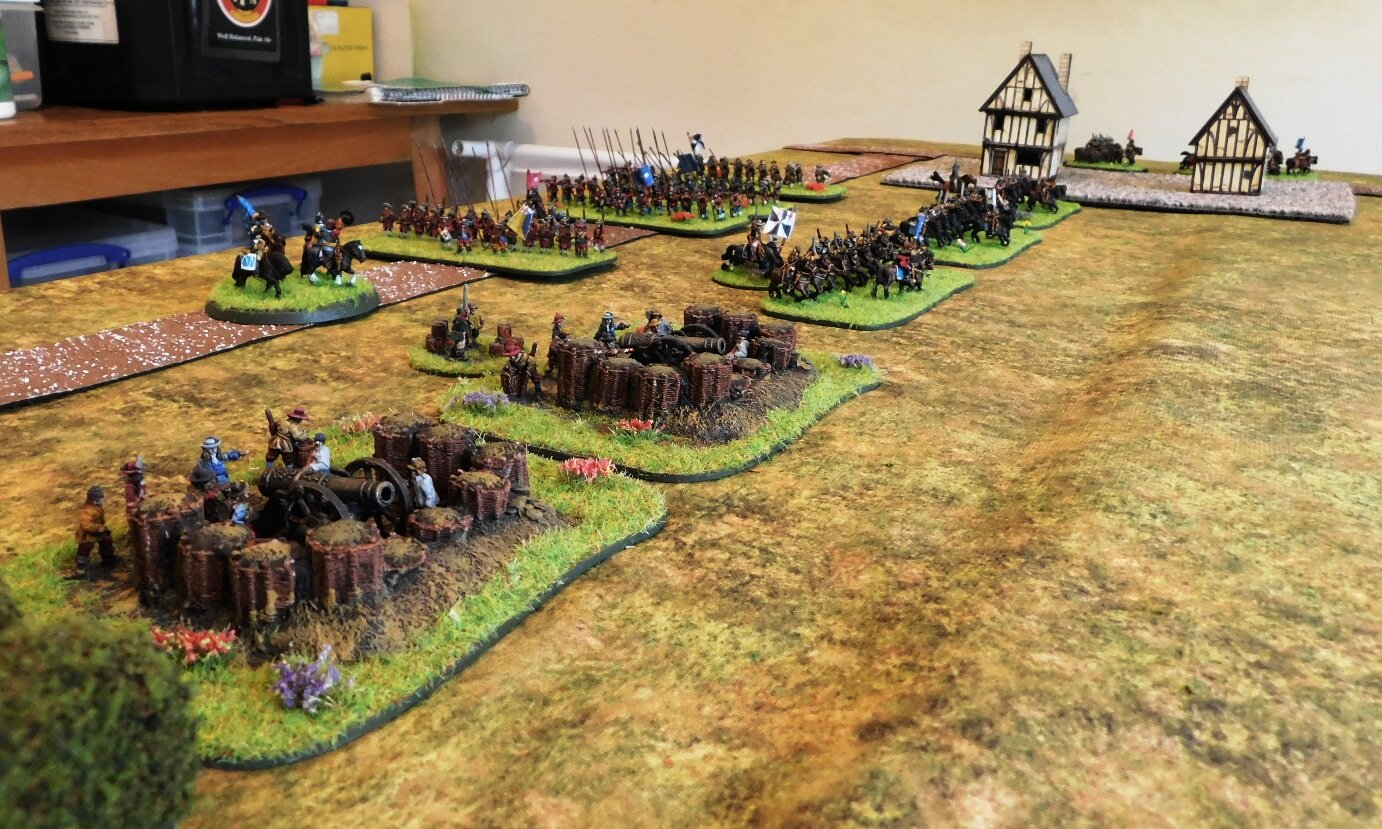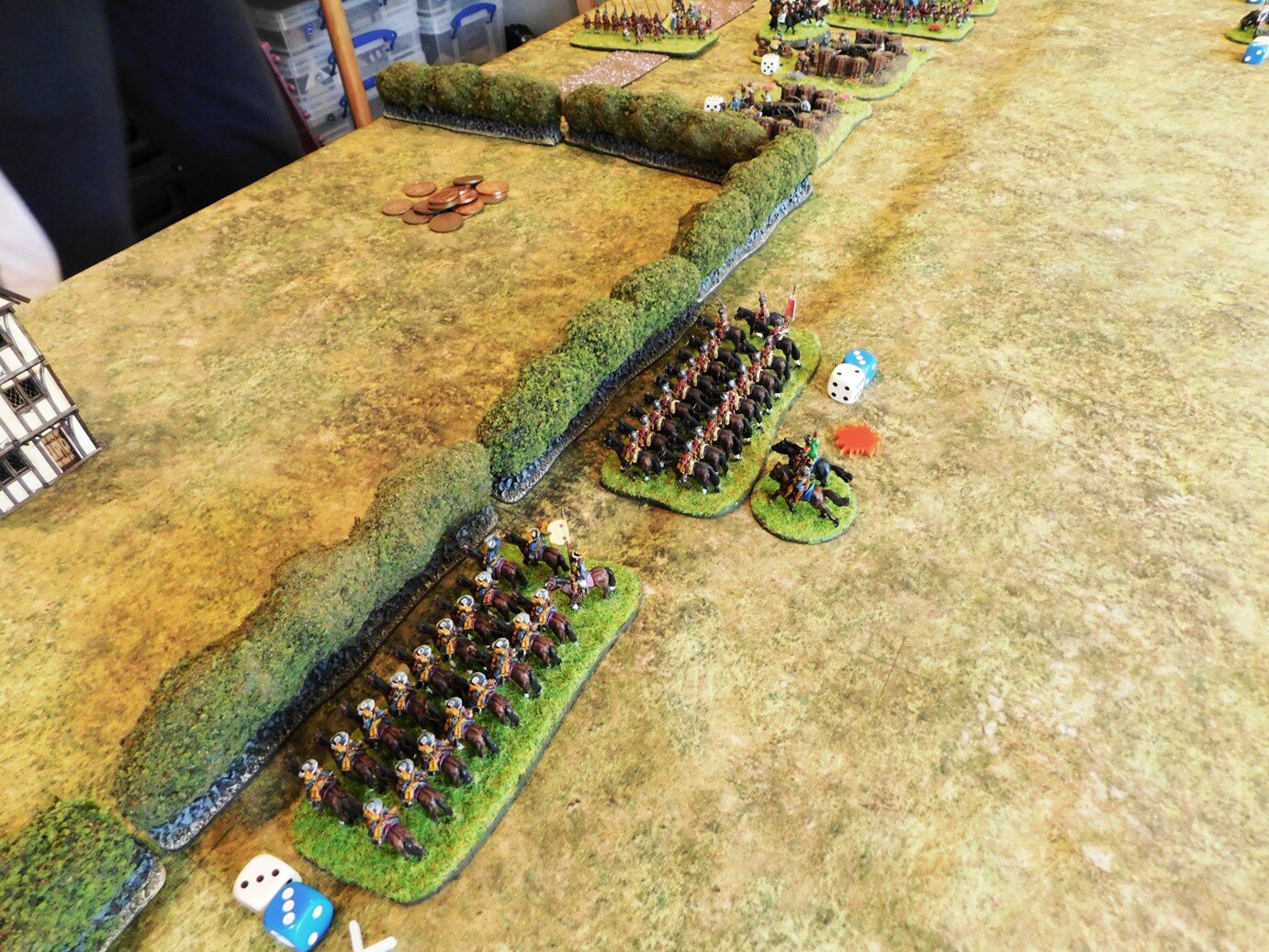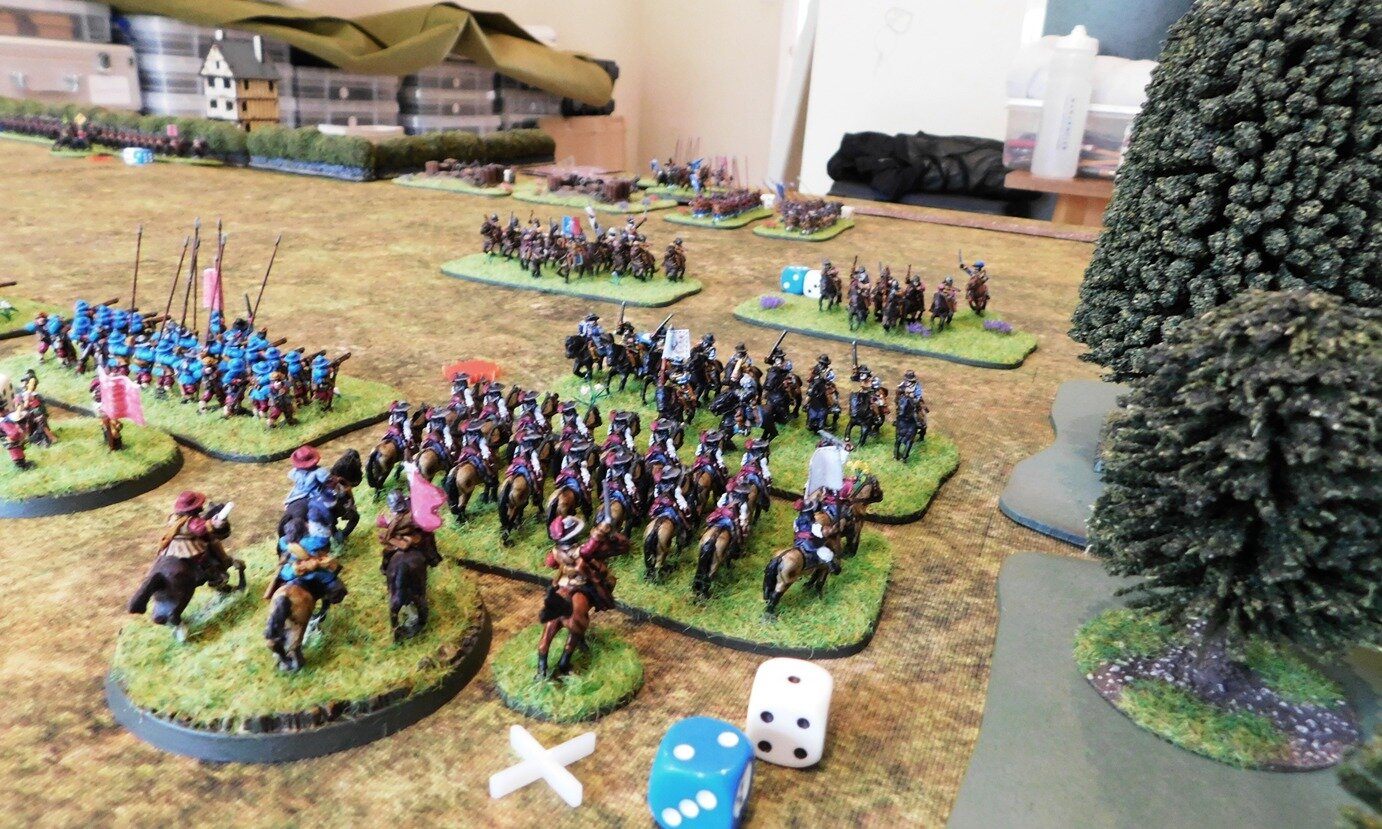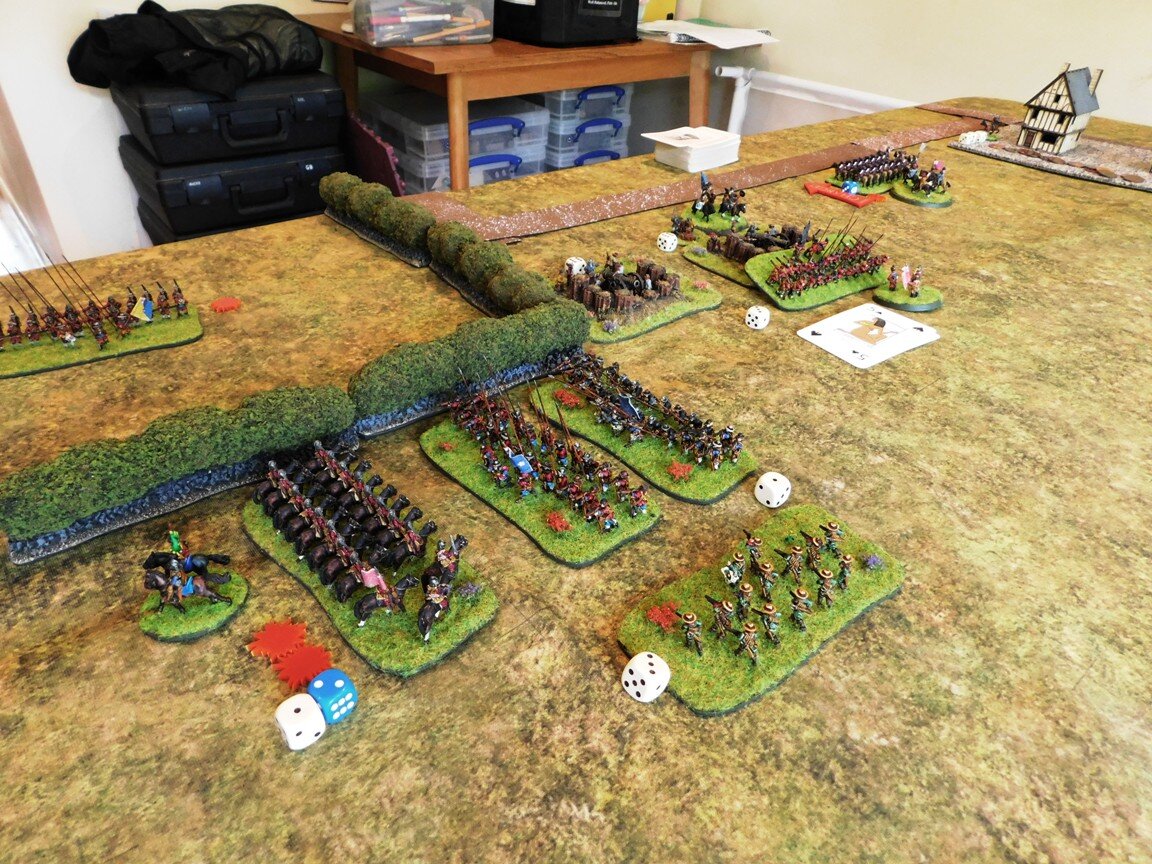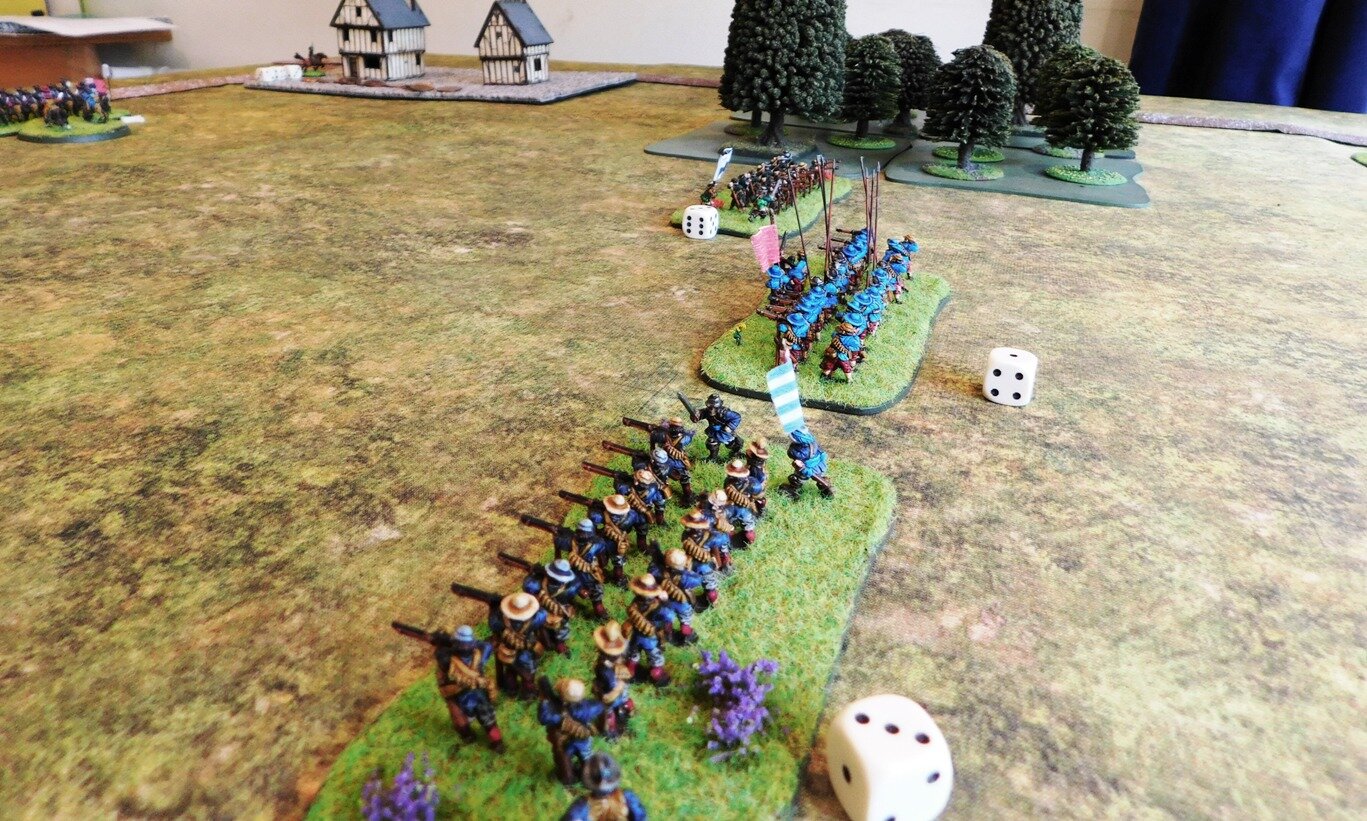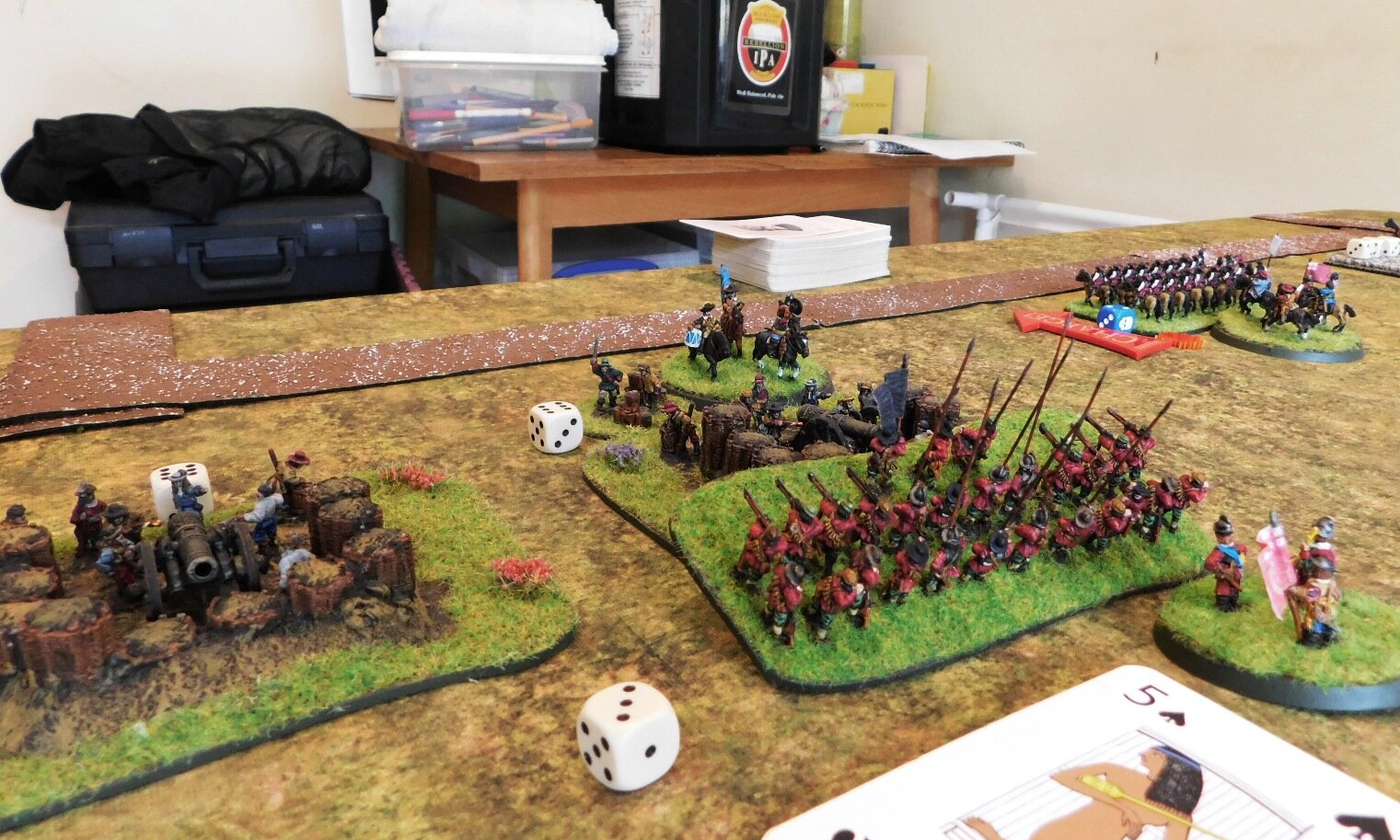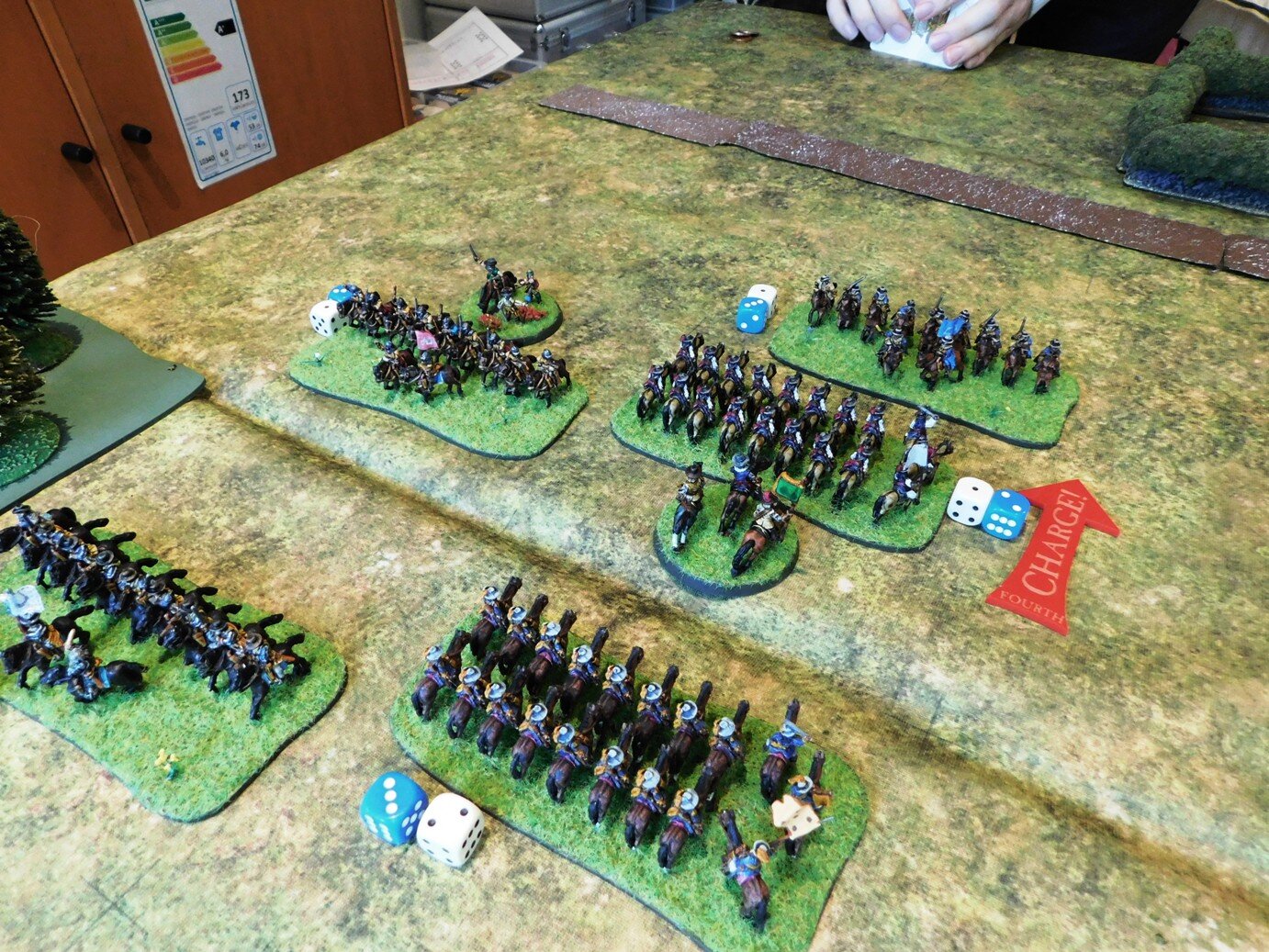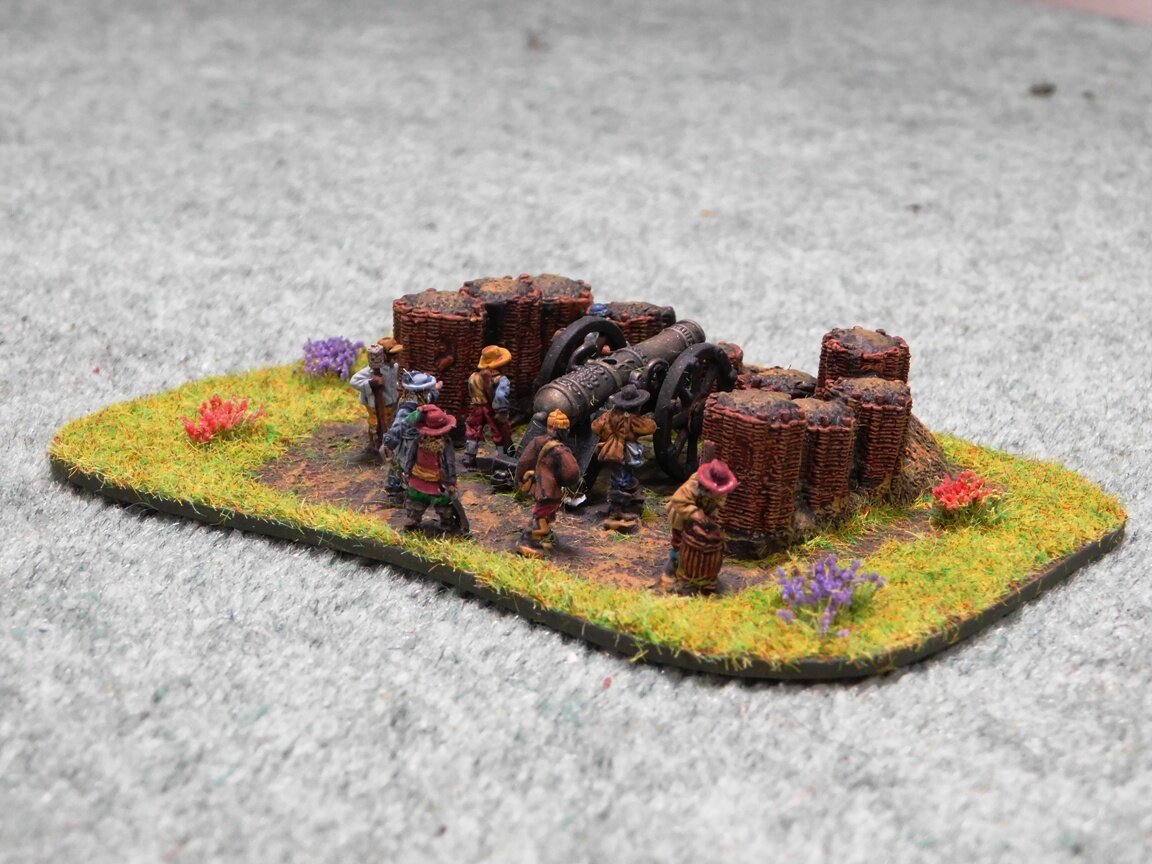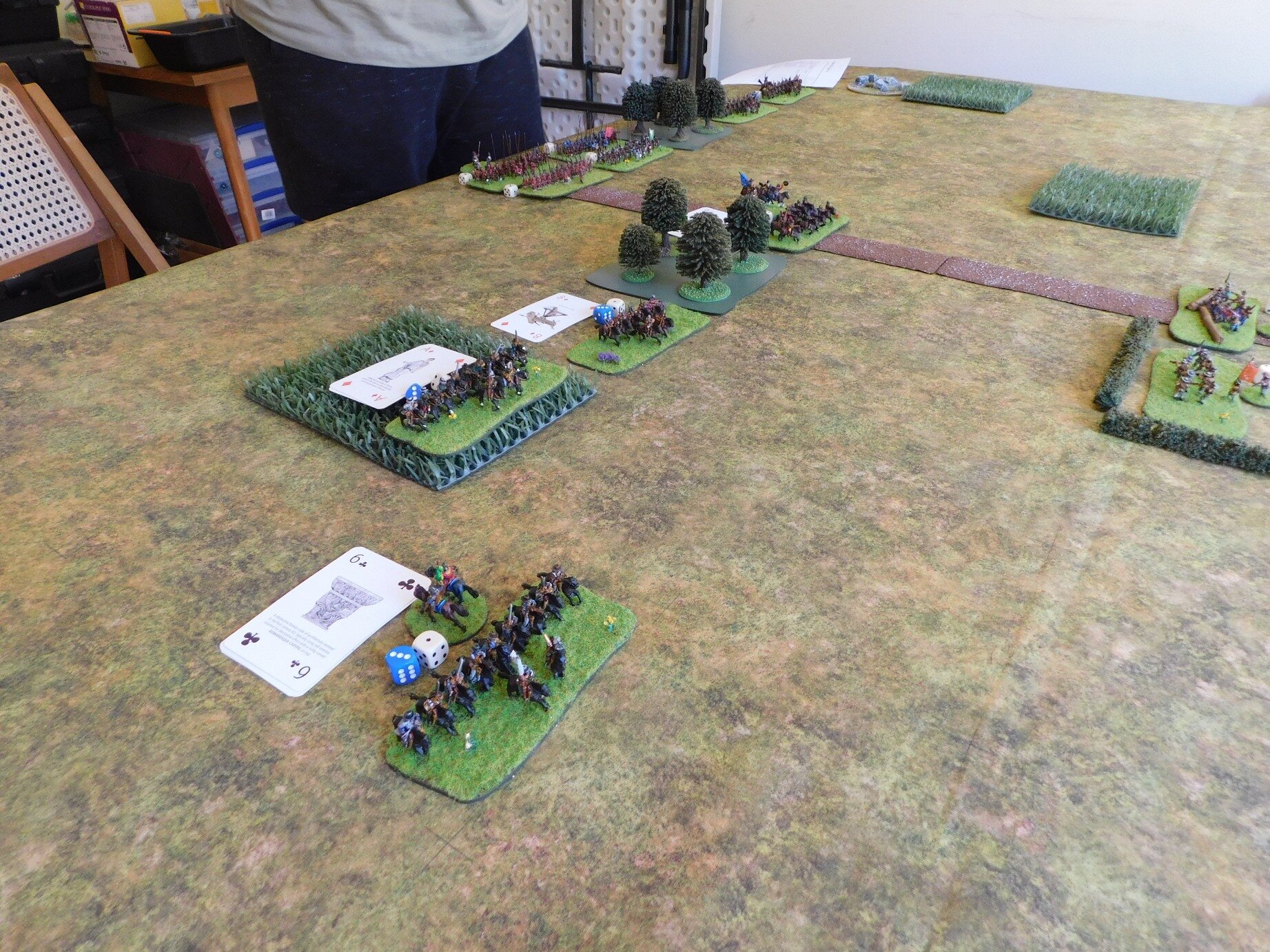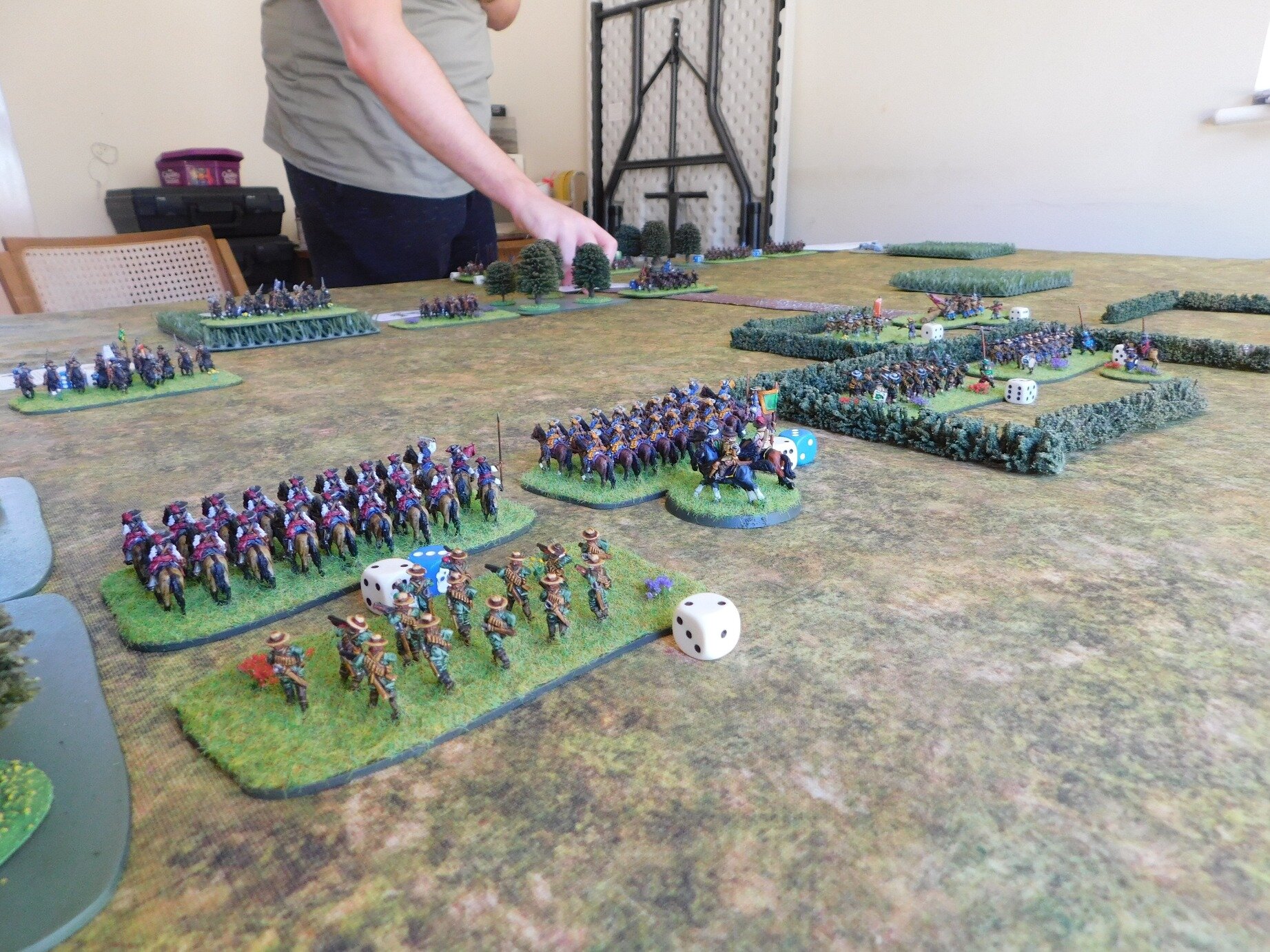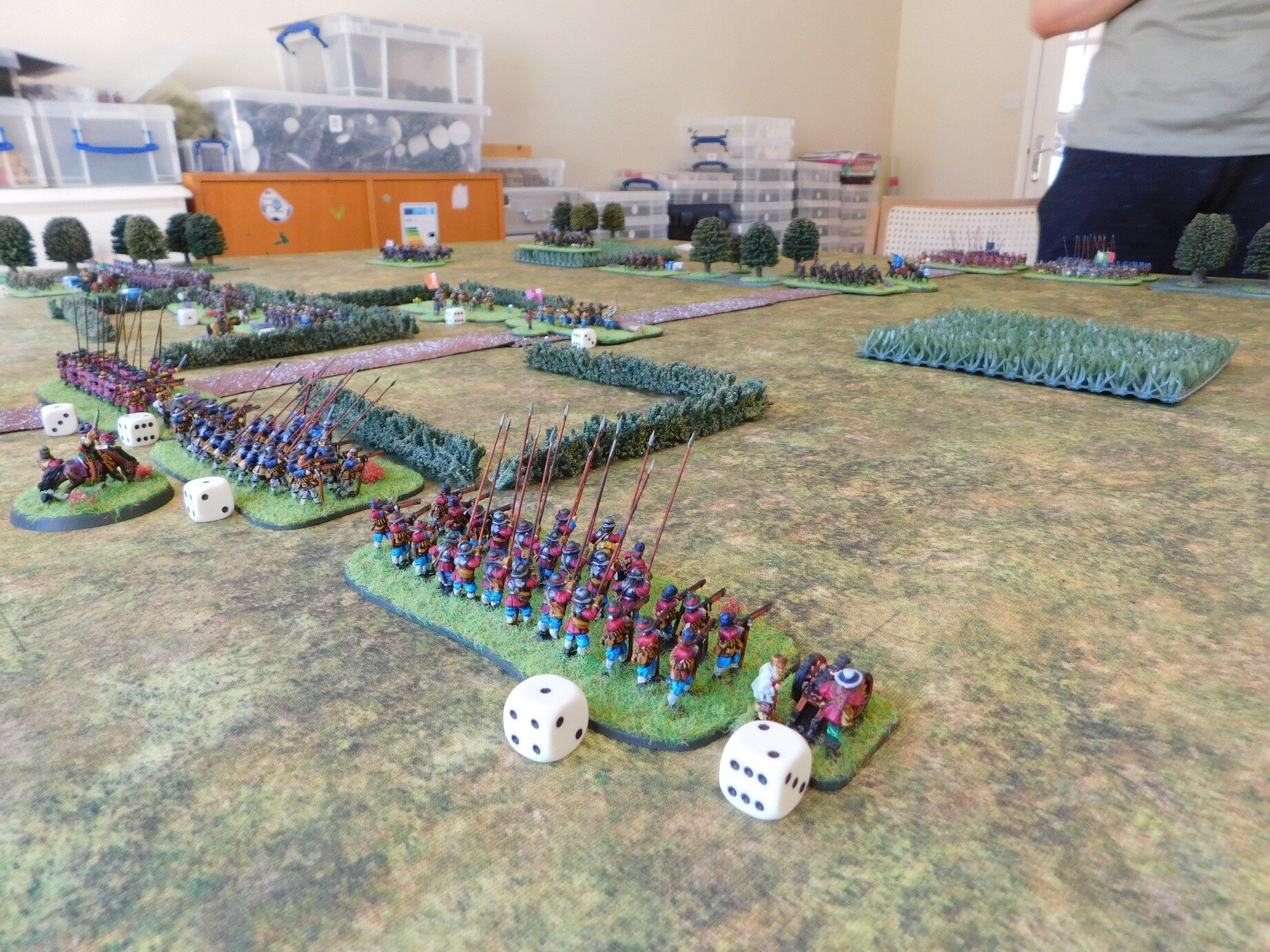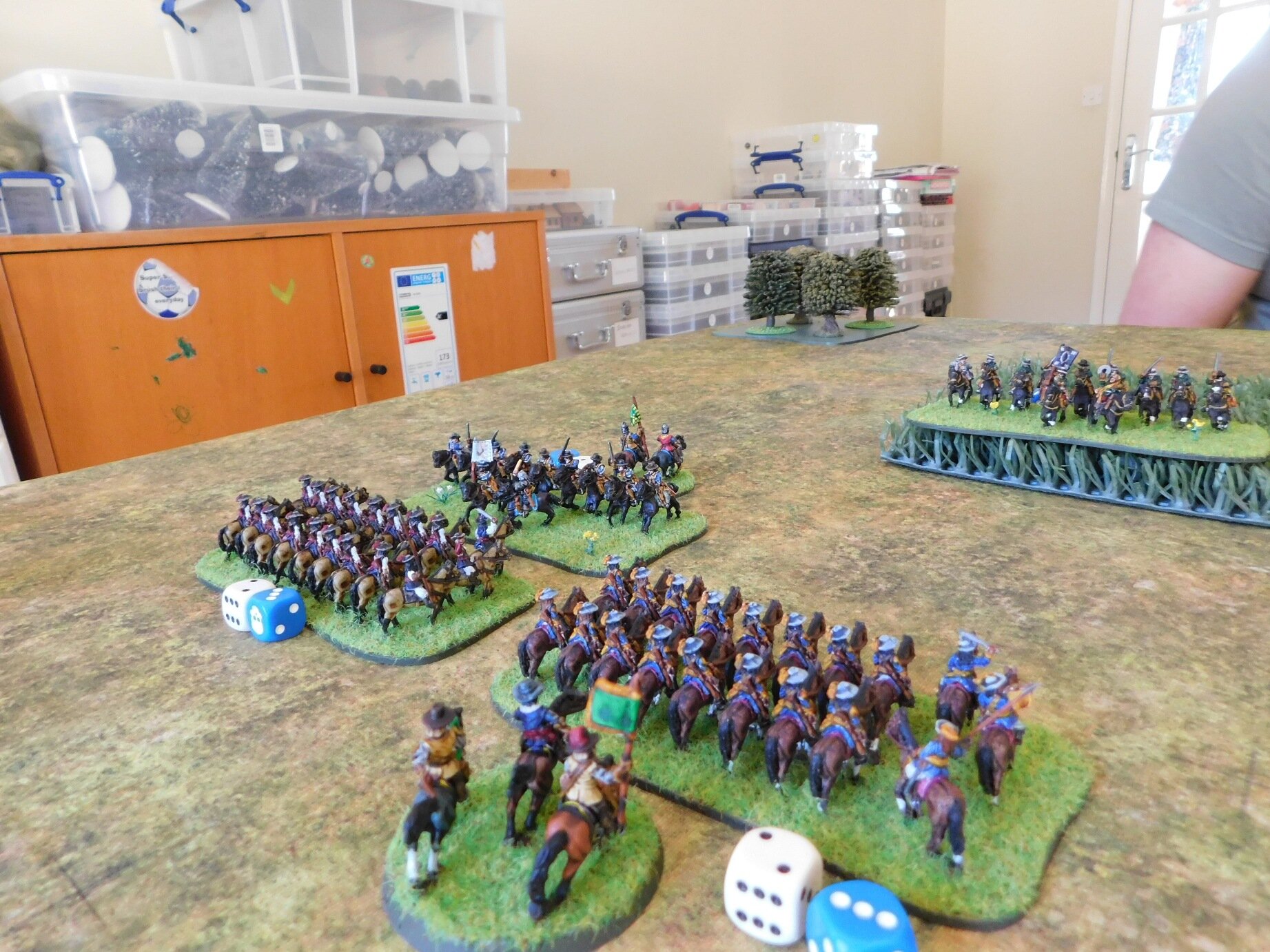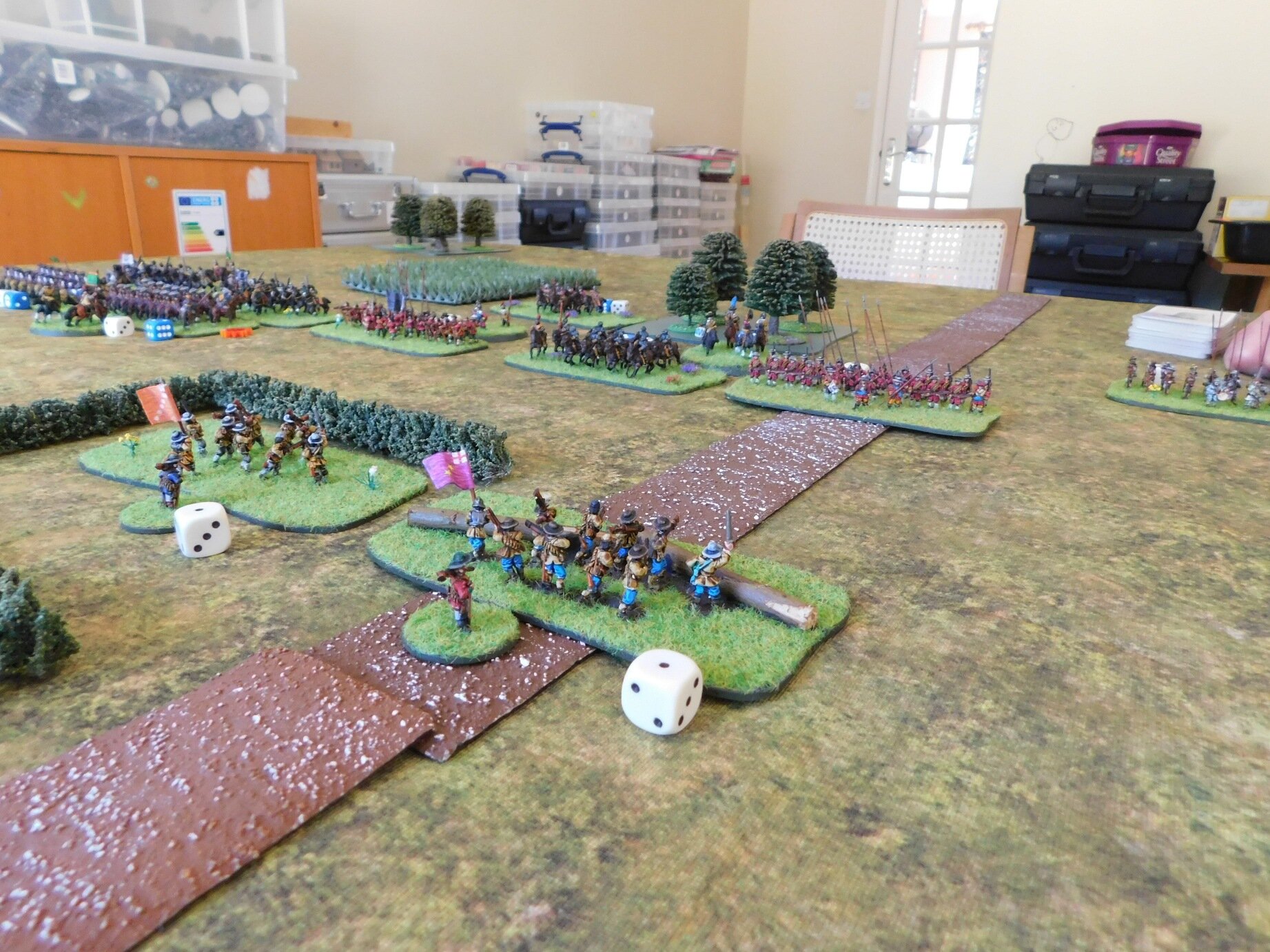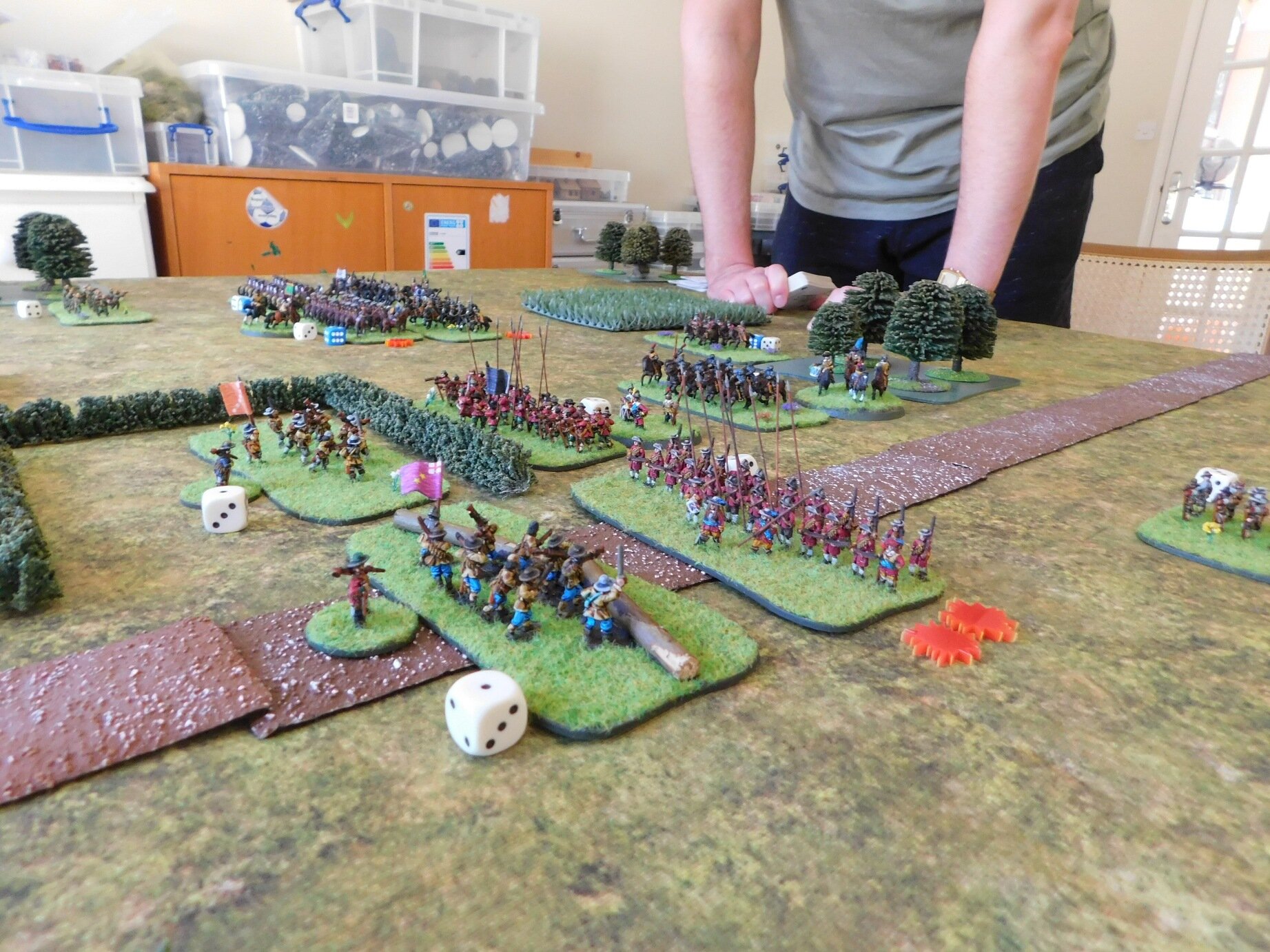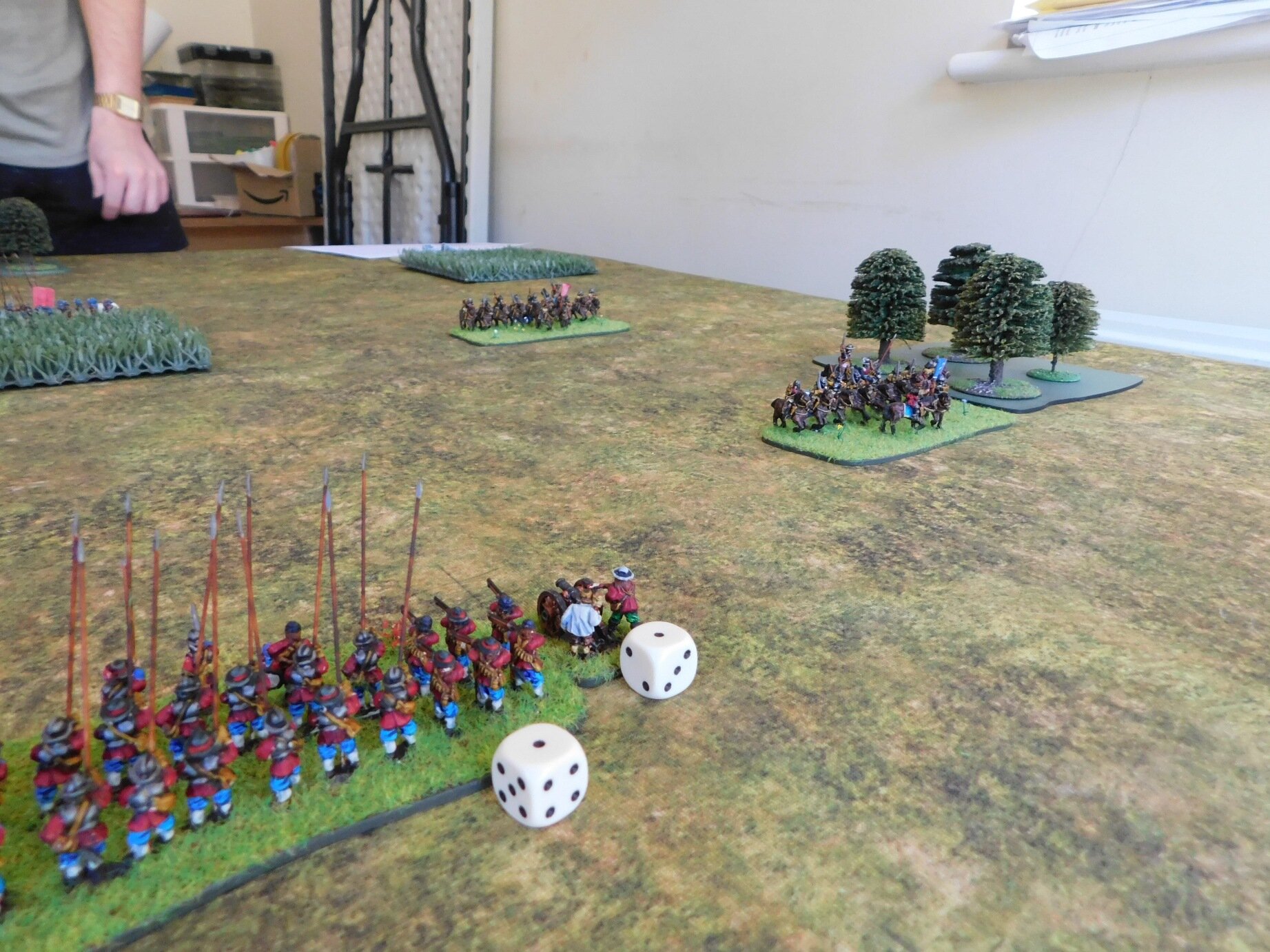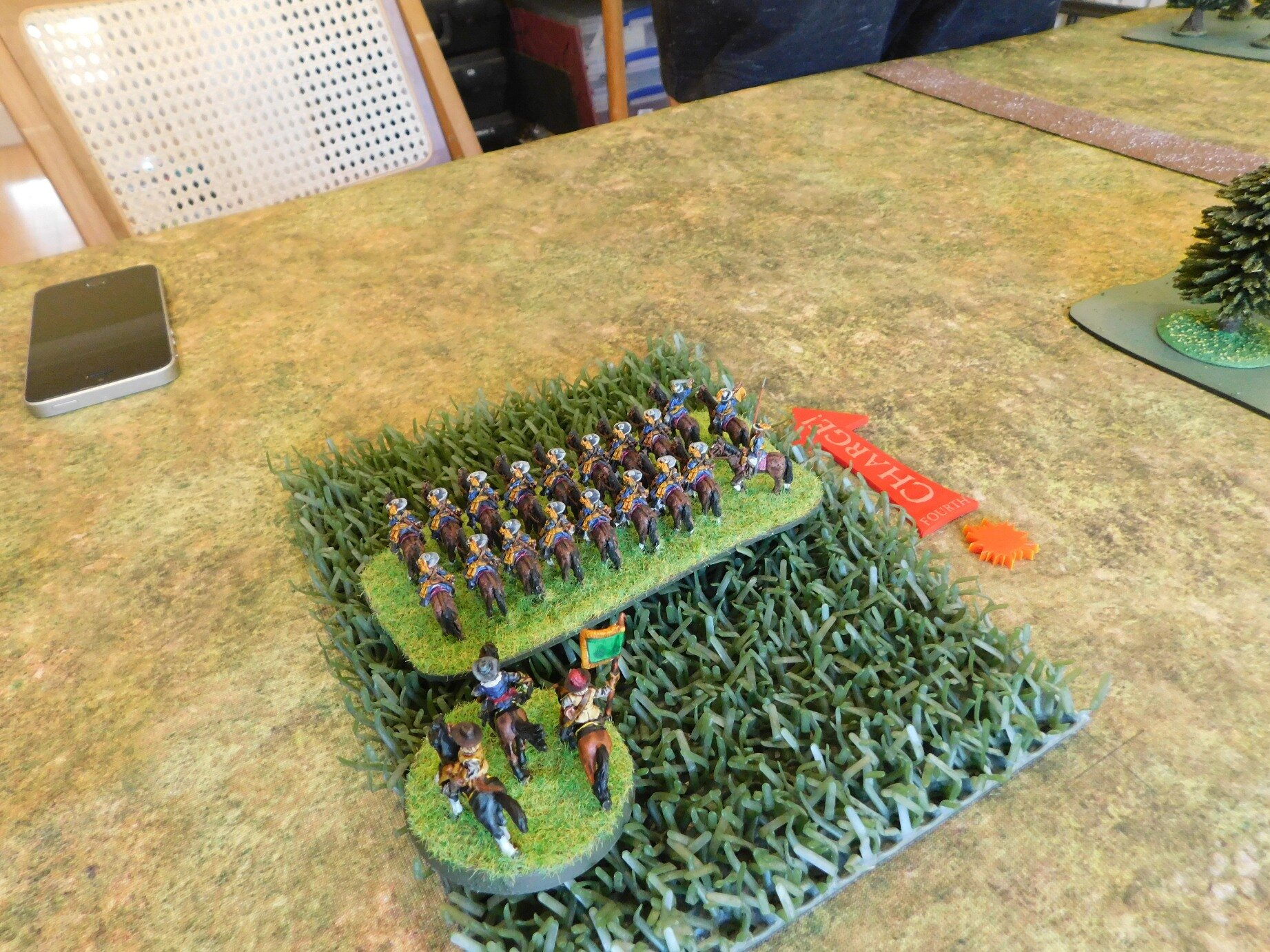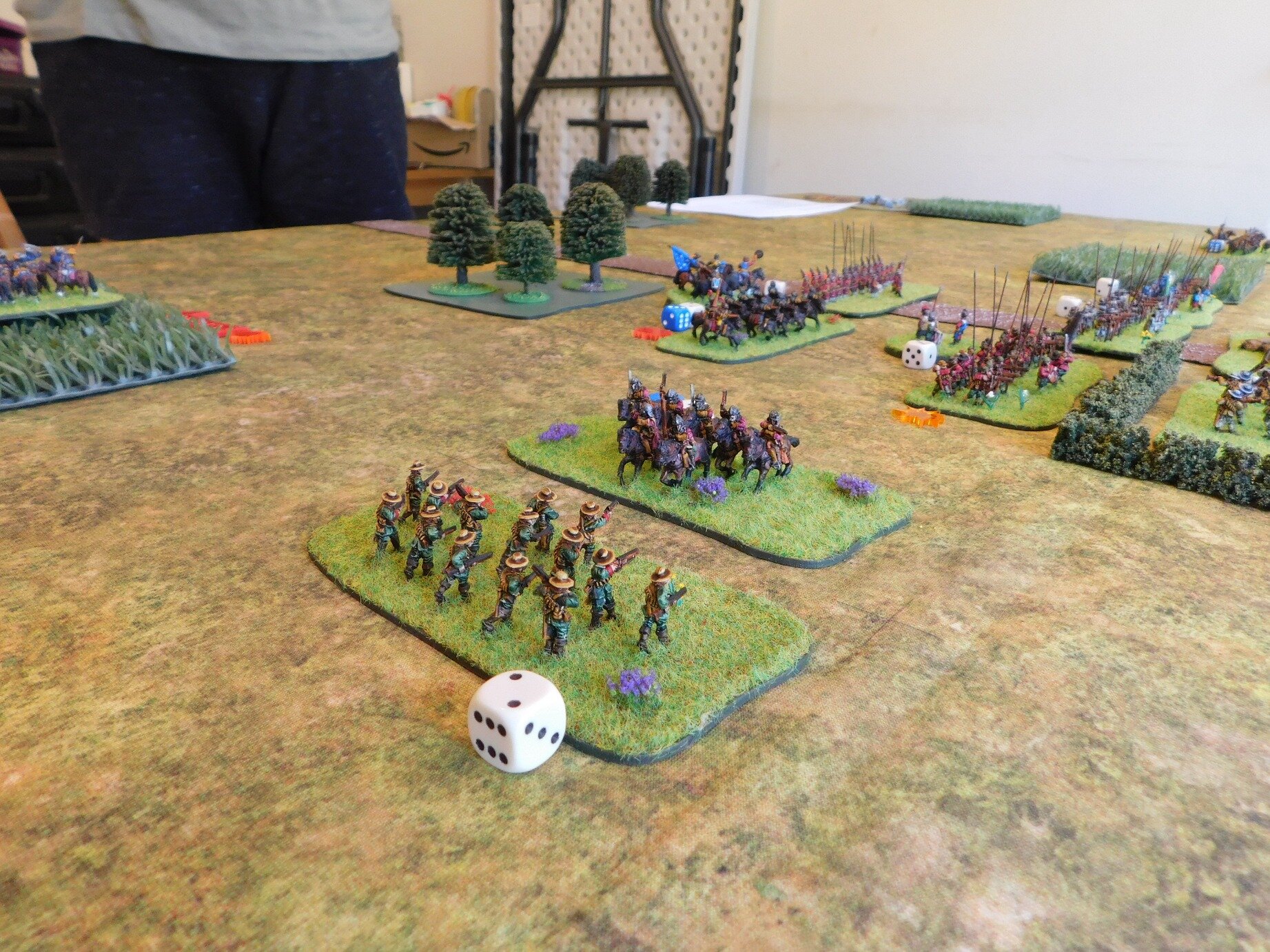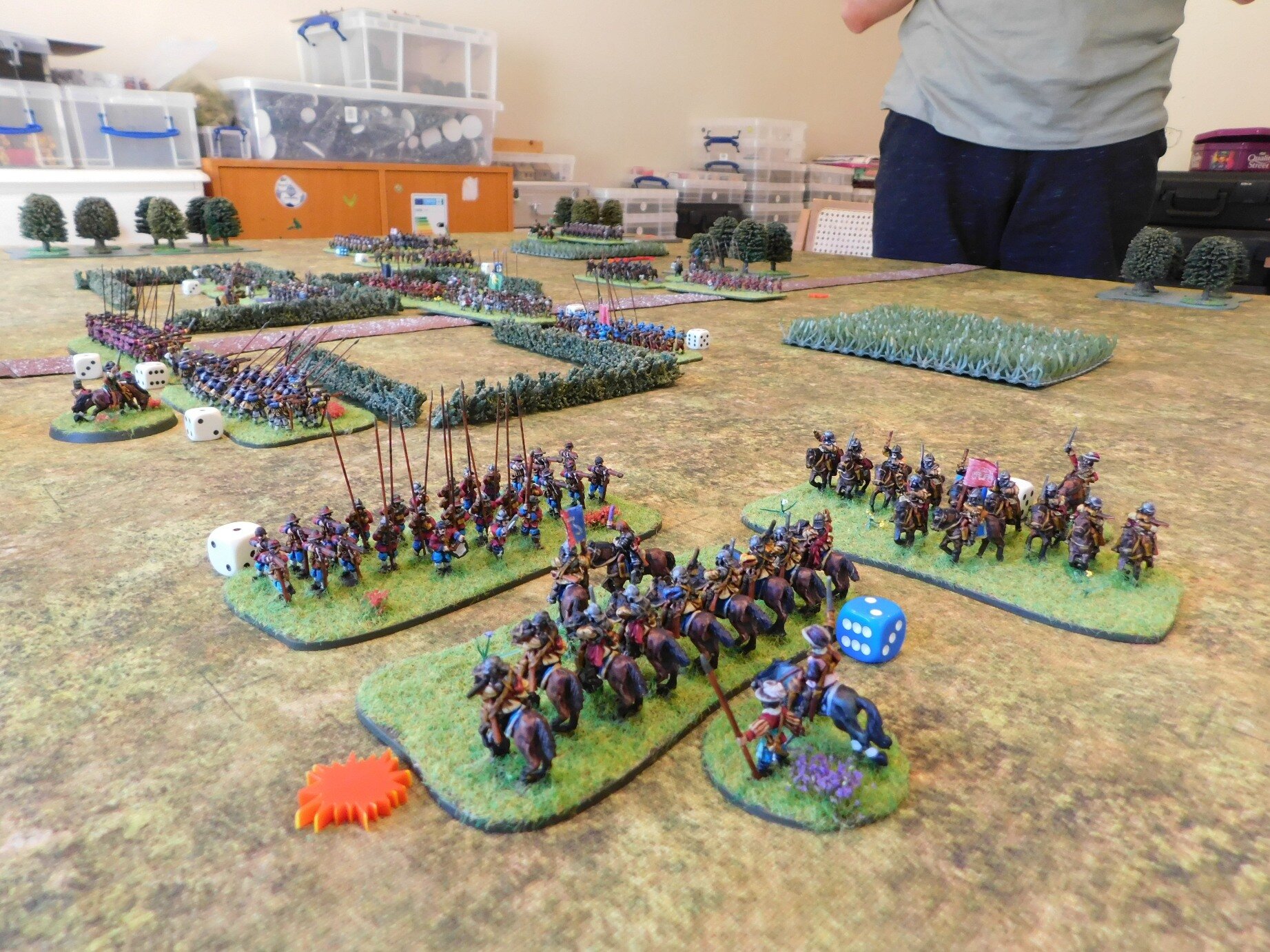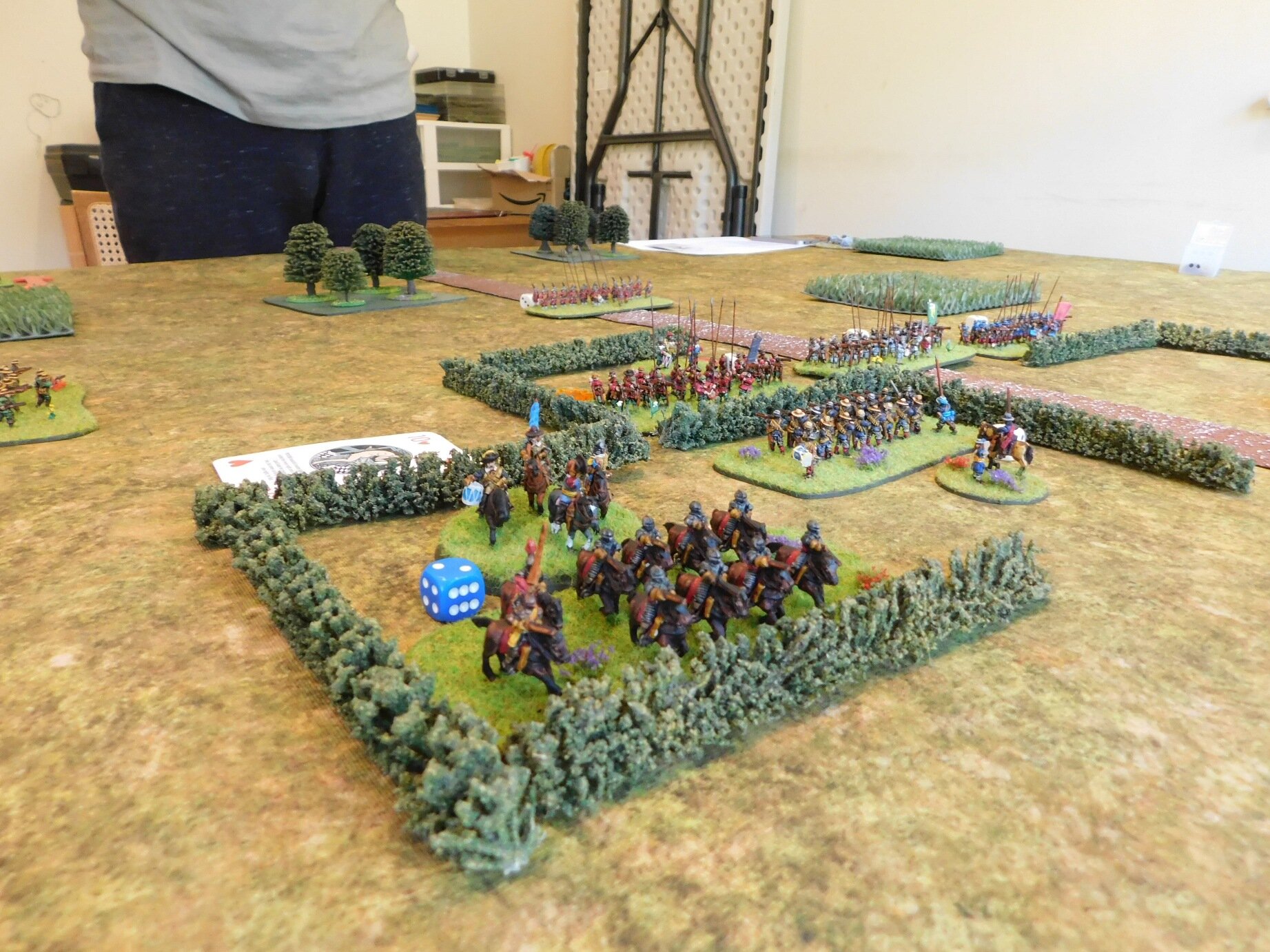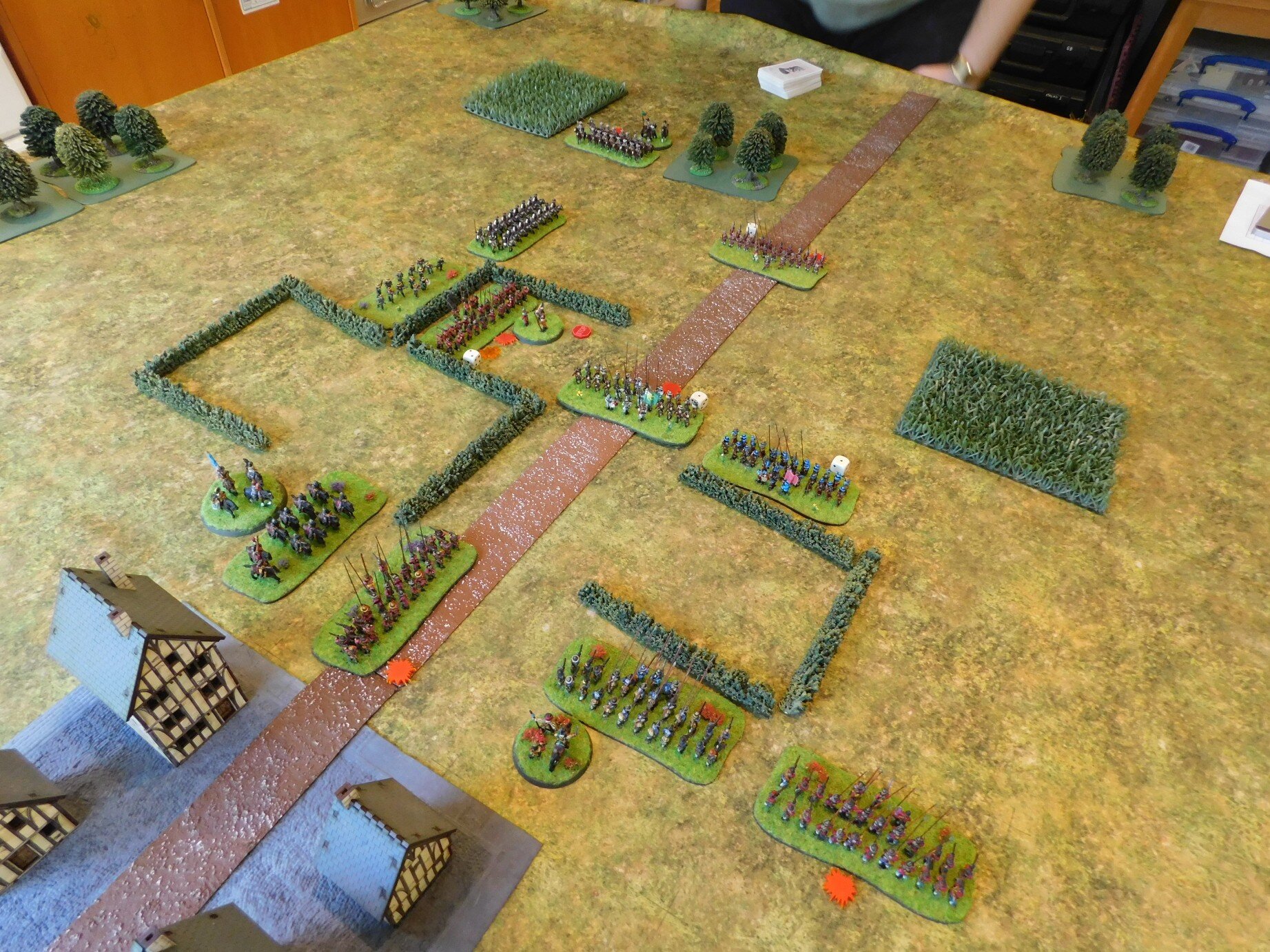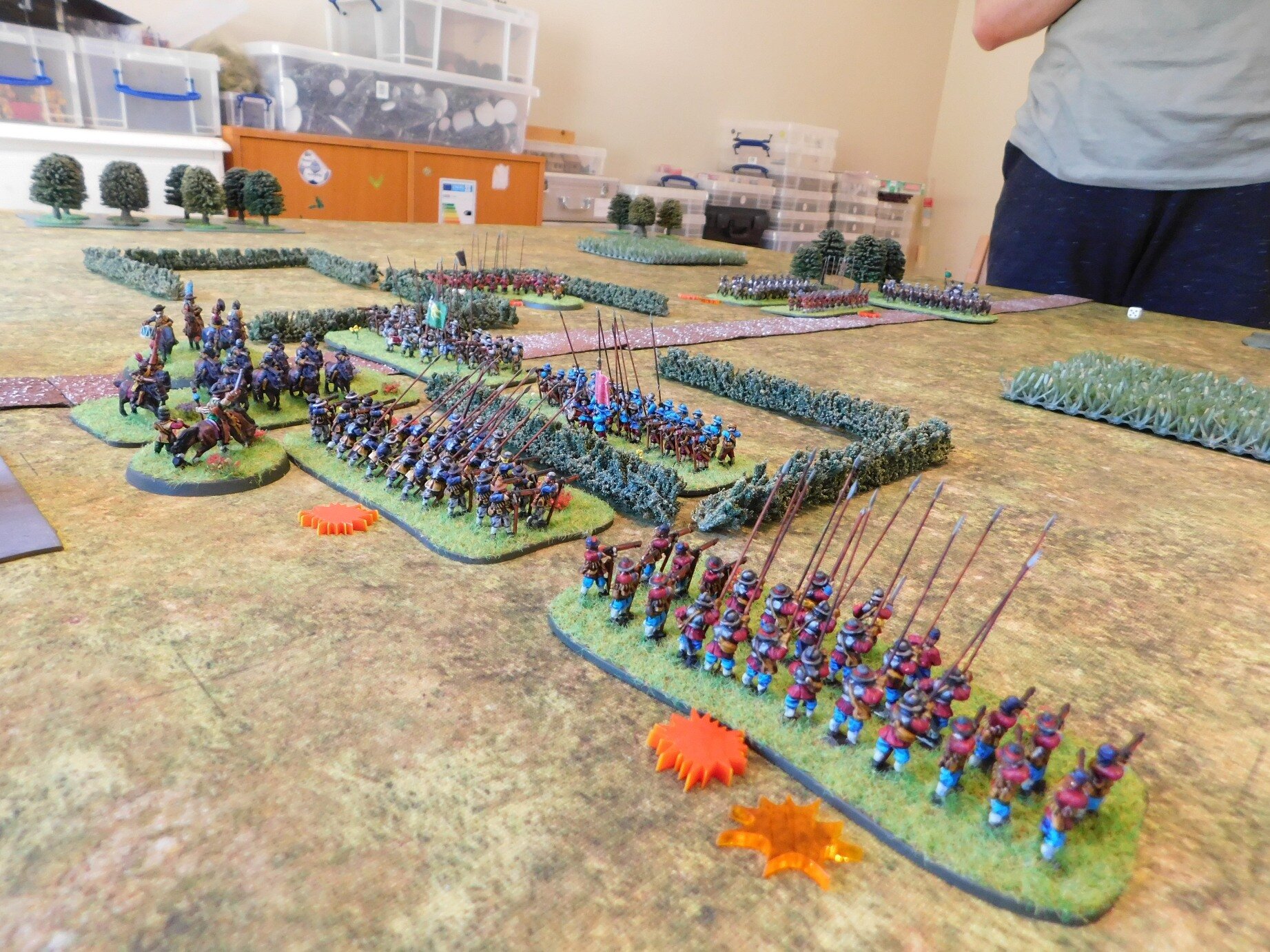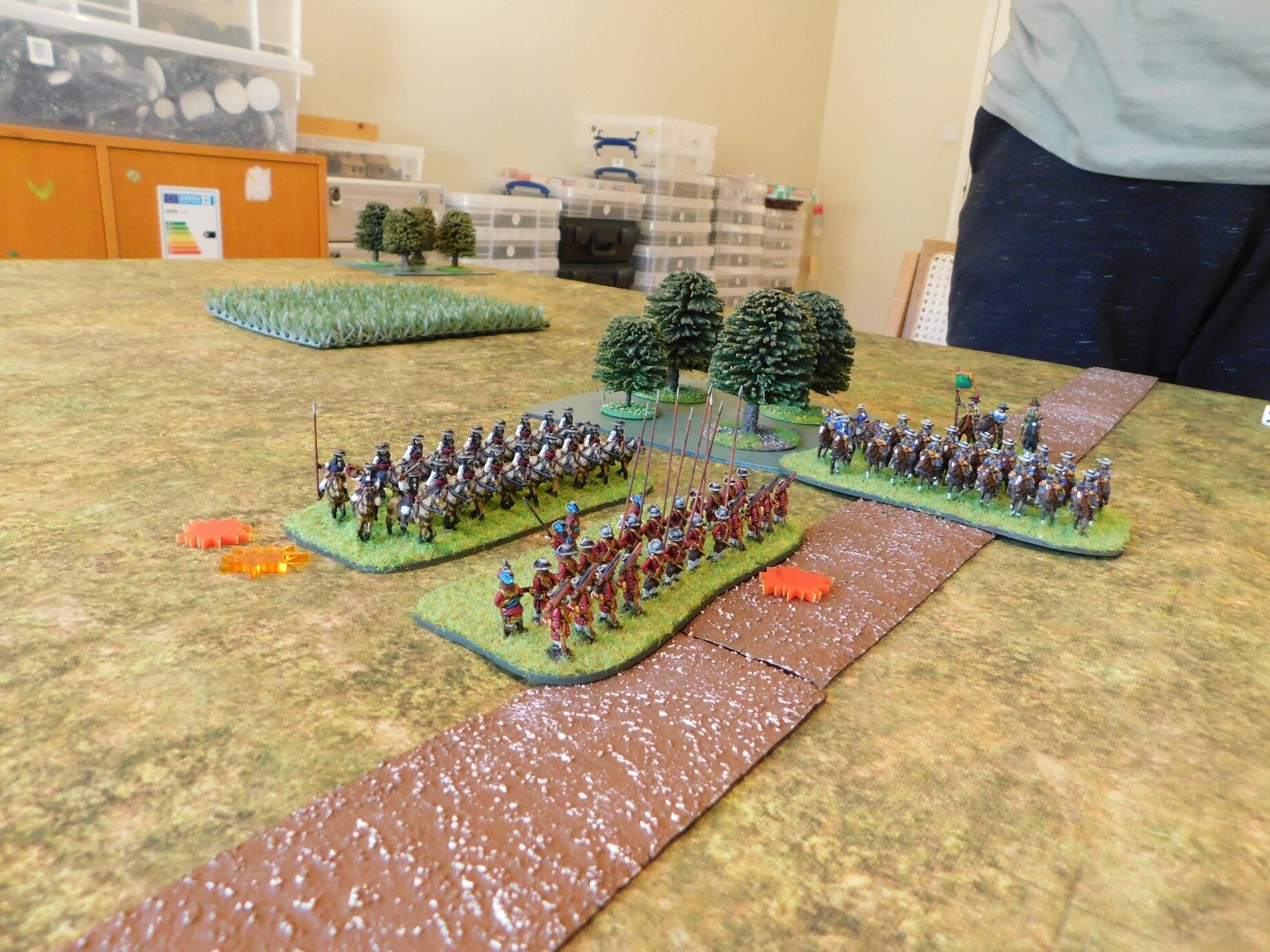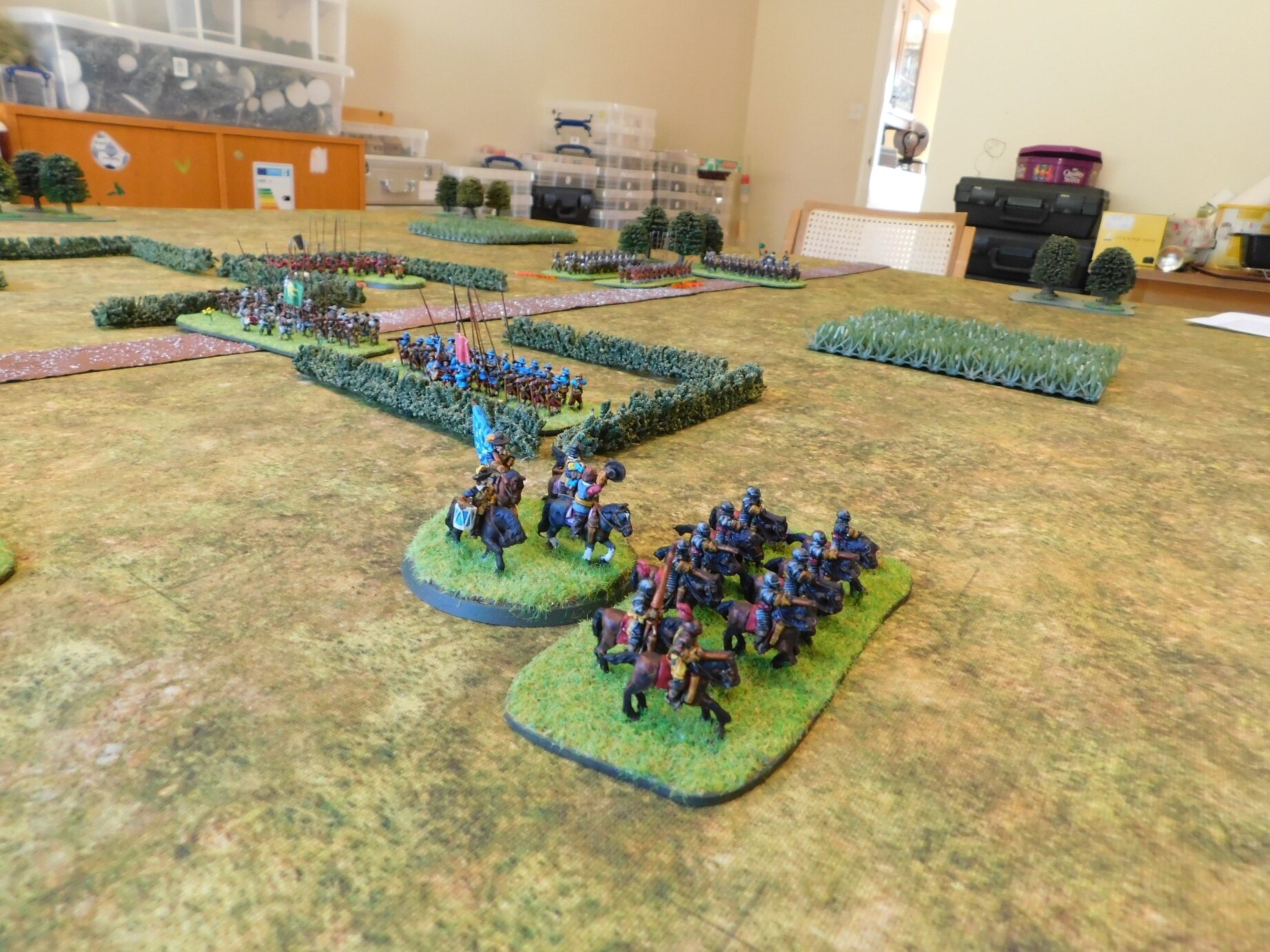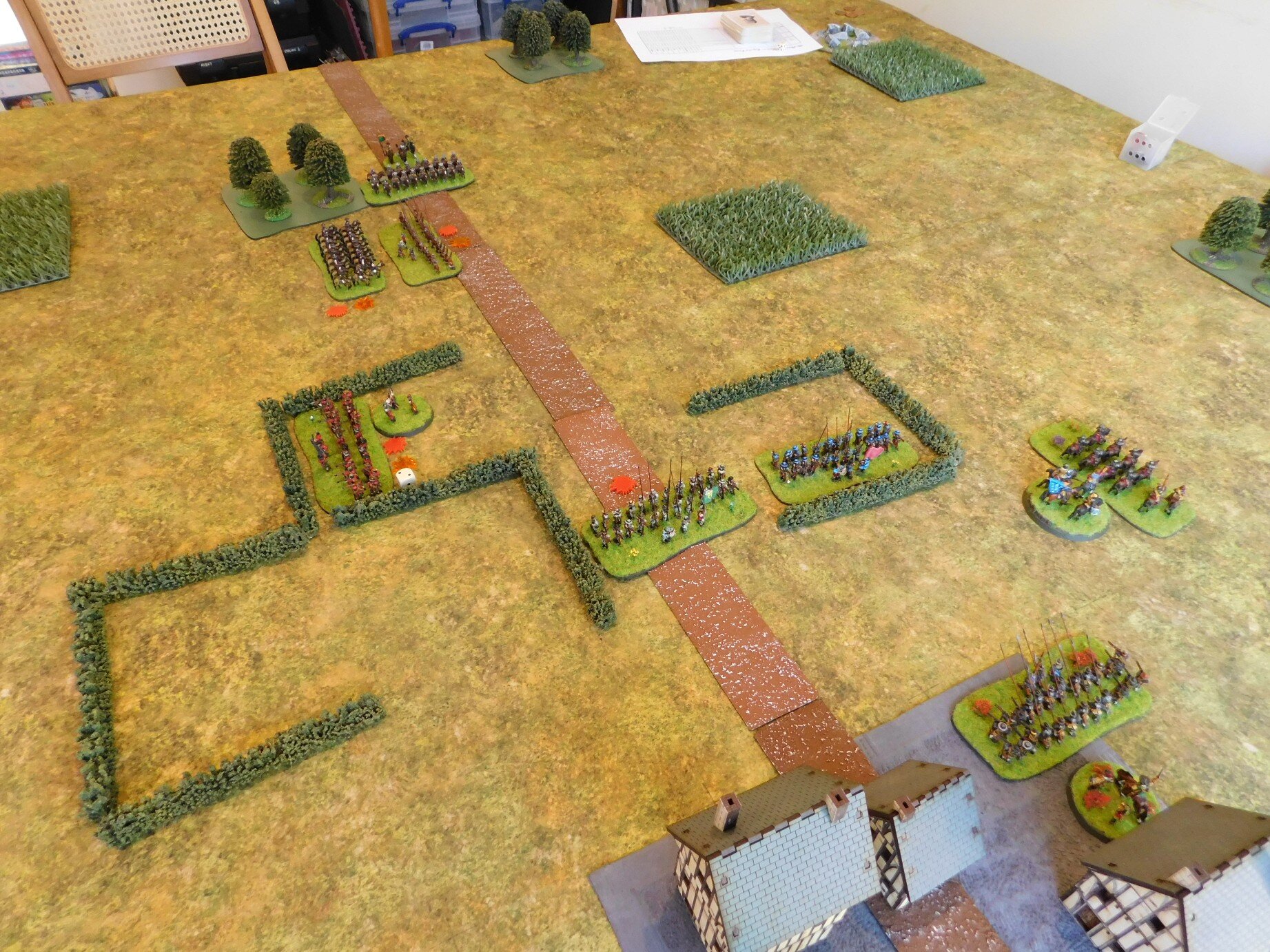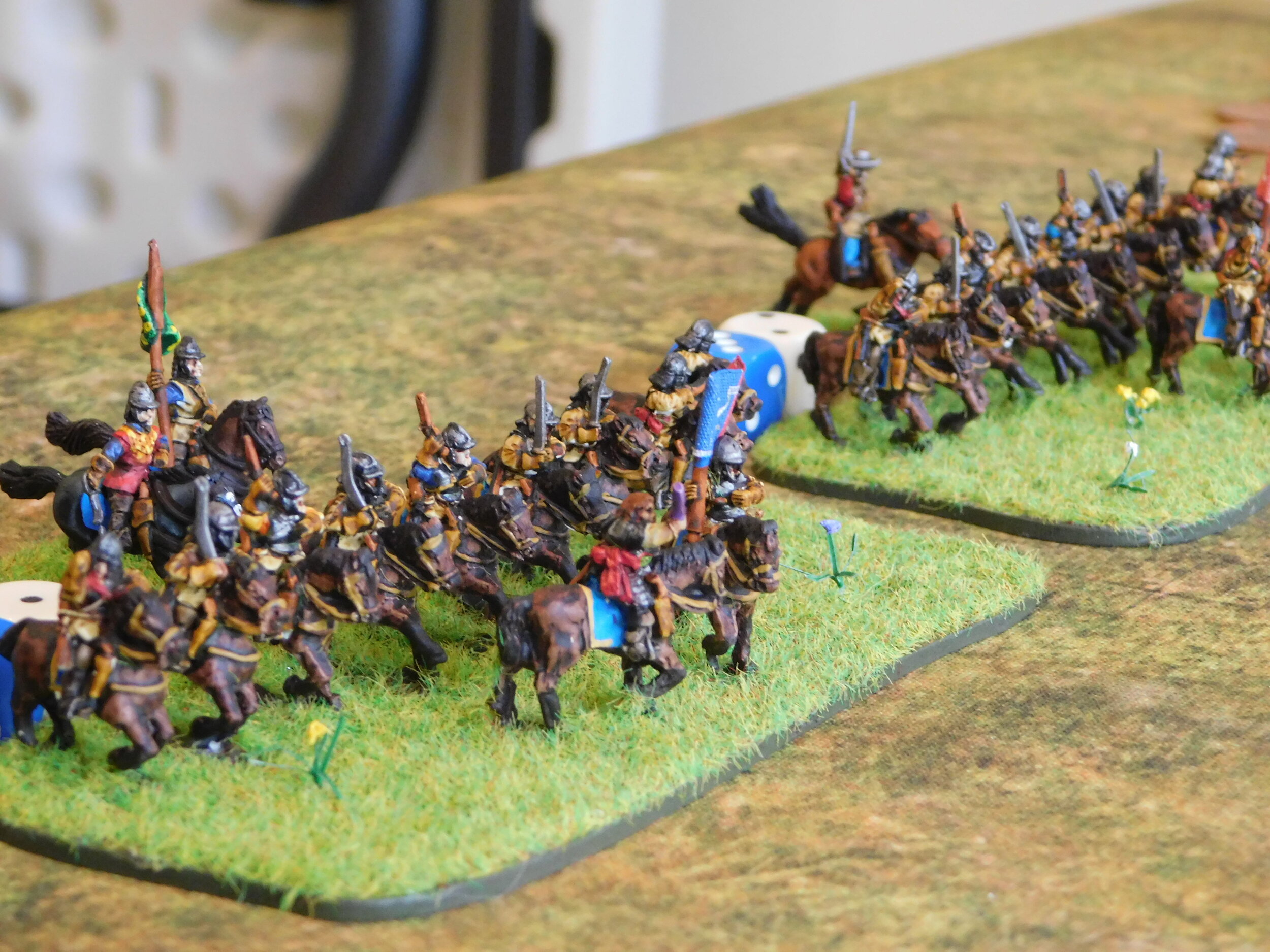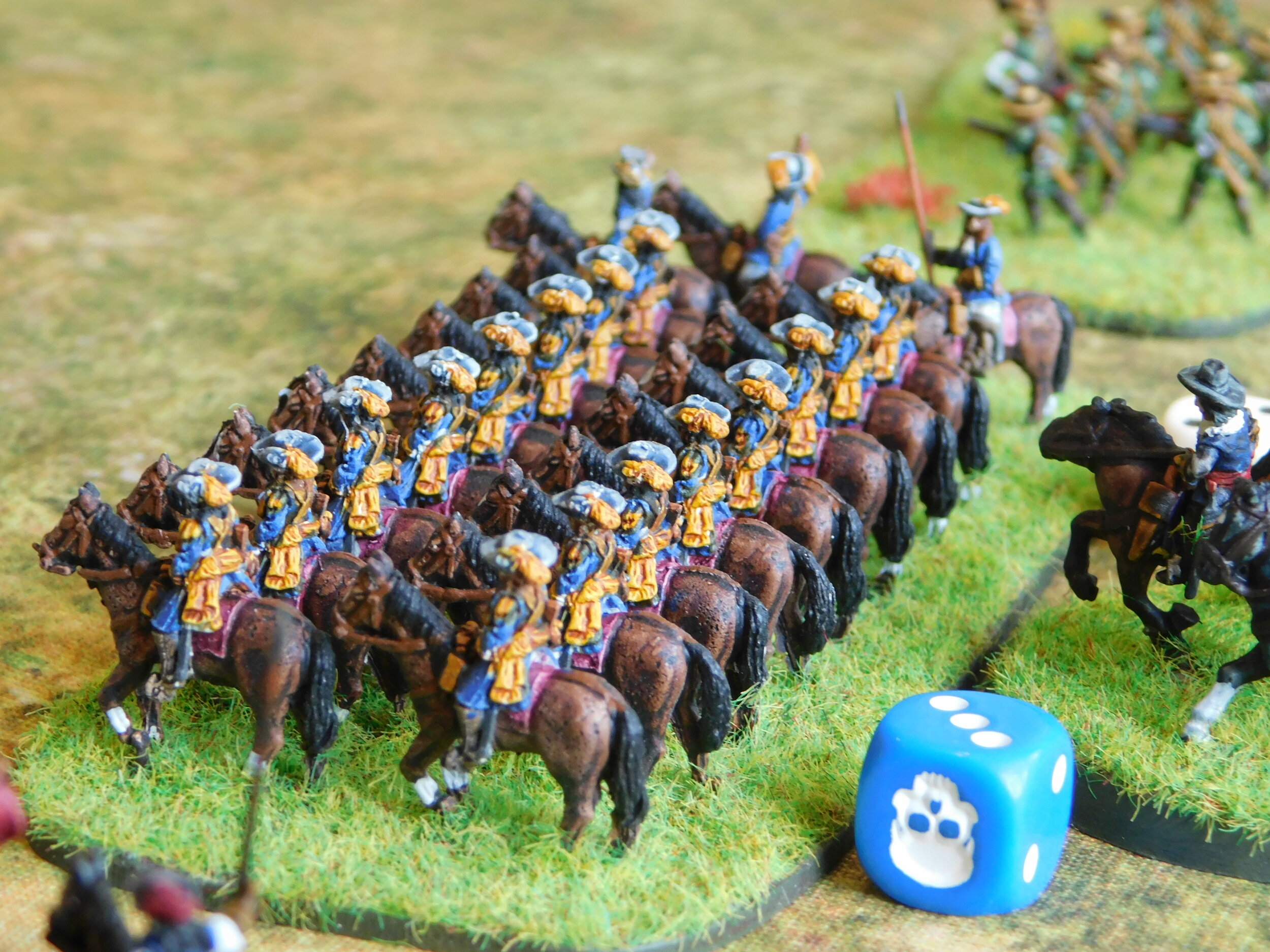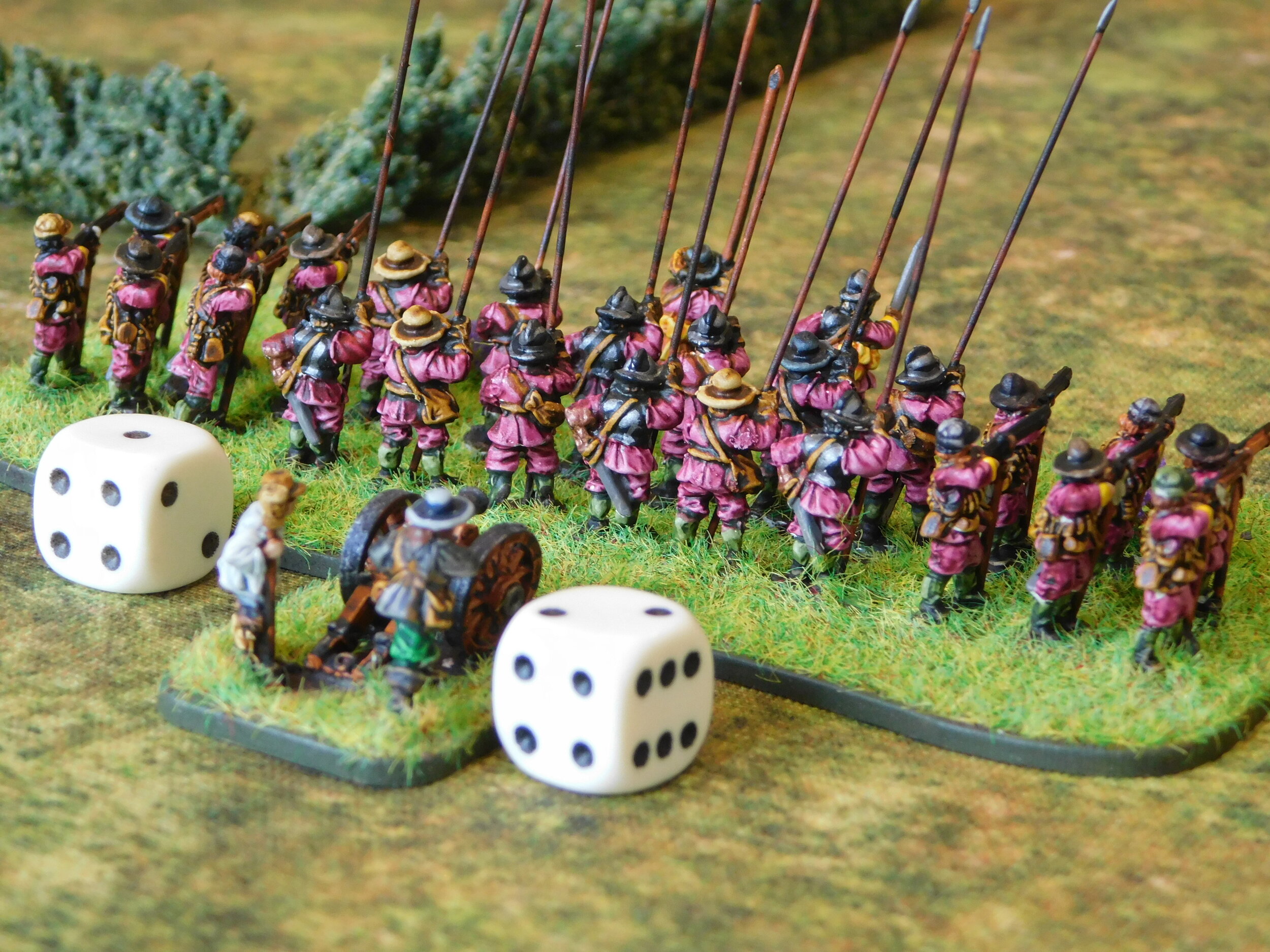Scottish Pikes
/Here’s another battalia of lowland Scottish pikemen for my English Civil War collection:
The figures are from Khurasan’s Irish/Scottish ECW range. They are 15mm and size nicely with the Peter Pig and Hallmark (from Magister Militum) ranges that I am already using. They are very cleanly sculpted and an absolute pleasure to paint. Those of you in the UK might be interested to note that they arrived with me only five days after ordering them from the US: the GZG teleport device is obviously now working in both directions!
They are painted mainly with GW Contrast paints and are mounted on a Warbases vehicle base, giving a very nicely sized element for use with the For King & Parliament ruleset. The flowers/heather is from Boontown.
I’ve taken a pragmatic approach to painting tartan. Rather than spend hours and hours trying to actually reproduce a genuine tartan pattern, I’ve made do with something that doesn’t take too long and looks good at a wargames distance of three feet or so. In effect, all I did was add stripes of a different colour to a heavily shaded sash. This worked for these guys, but the highlanders that I’m currently painting need a little more work as they have a lot more tartan, but more on that in a later post.




